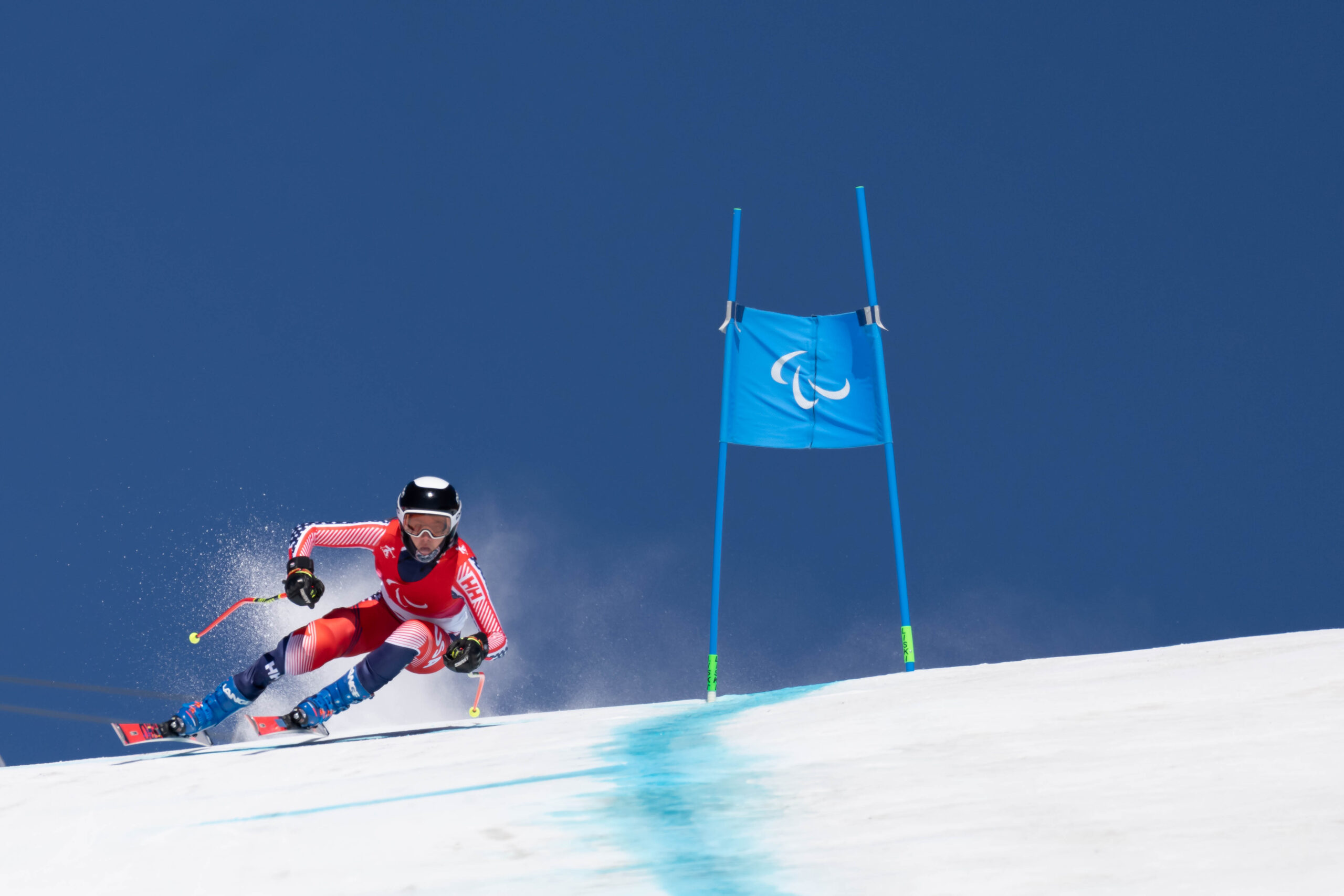Q+A with Jesse Keefe from the 2022 Beijing Paralympics
SVSEF FIS Team and U.S. ParaAlpine Team Athlete, Jesse Keefe, has spent the vast majority of the 2021/22 season on the road with the U.S. ParaAlpine Team. We had the chance to catch up with him via “burner phone” between races at the Beijing Paralympics, and in the midst of stories and a ton of laughs, we’ve scratched the surface here with what his experience has been like and what’s next for Jesse.
Q: What has been your biggest surprise in Beijing?
A: When I first got here there were two days until the Downhill. It’s hard to explain—it was super weird—I expected it to be really warm and so you wonder about what the snow will be like. It was the BEST snow I’ve ever raced on – super aggressive, super firm, not icy, super grippy—the kind of snow that doesn’t get any grooves in it skier after skier. For the speed events it’s been like hero snow—I’m so psyched I got to race on it.
Oh – and you know on the TV the snow looks brown along the sides of the racecourse? That’s from the sand storms that blow through here and cover the snow—it’s crazy.
Q: What’s day-to-day like in the Athlete Village?
A: To be honest, it’s a lot better than I thought it would be—I wasn’t sure what to expect other than some of the stuff I’d seen from athletes at the Olympics. The Alpine team is all together and the other teams have their areas, so we don’t get to hang out with athletes from other sports. We really wanted to watch Team USA vs. Canada in Sled Hockey, but we couldn’t—so that was kind of a bummer. And they crushed it.
I’ve met people from a lot of different countries—Sweden, Canada, Finland, Austria, the Netherlands. I’ve probably connected the most with the Swedish Alpine team because there’s an 18-year-old on their team.
The volunteers are amazing and everything is super organized. The food is pretty good. I mean there’s Pizza Hut and KFC here—they only have cheese pizza and chicken sandwiches, but that’s all I need (laughing). I’m not sure the team nutritionist is so psyched about that.
Q: What’s the team dynamic like within the U.S. Men’s ParaAlpine Team?
A: Well, I’m pretty sure sure when I turn 18 on March 26th it’s going to be a whole new ball game (laughing)! But it’s so great—the guys with experience provide so much guidance and I’ve been really welcomed by the team. I feel right at home and everyone respects each other.
Q: How did you feel at the start of the Olympic Downhill compared to other races?
A: That’s a good question, because with teammates that have experienced racing in the Olympic Games before, they really encouraged me to just treat it like a normal race. There’s no doubt it was nerve-wracking up there, but they really helped me get in the right headspace. Obviously it’s the Olympics—and we’re in Beijing—so of course it’s different than a “normal” race—but I think they helped me manage that pretty well.
That said, the actual race was one of the most challenging courses I’ve ever skied—but with the BEST SNOW EVER!
Q: What is the support staff like for the ParaAlpine Team?
A: There are a few more people here at the Games. At the World Cup races, there’s Brennan Rubie and Tony McAllister—the on-hill coaches. Lindsay—our physiotherapist, Sally—our nutritionist, and the techs—AJ and Dana. At the Games we have one more coach, plus the USOPC staff who also worked with the Olympic athletes, two doctors, another physiotherapist, and a sports psychologist. The whole team is so amazing and to have the different aspects of support is amazing in case you need anything at all.
Q: With the different categories in ParaAlpine, how do you look at your competition?
A: Well, the factors are designed to, or supposed to, make it fair—but not really. There are definitely different advantages on different courses—flat sections really make the factors stand out. We really just accept it. I just need to get better at my events. I still have opportunities to improve, but my progression is getting a lot better—I’m getting my feeling for speed down. I really try to only compare myself with others in the same para alpine classification.
Q: How did the SVSEF Speed Project at Soldier Mountain make a difference?
A: The project at Soldier really helped a lot I think. It was easy to get the flow down on the track there and that allowed me to work on my patience coming off of tech skiing. In Norway at the World Championships, I was just pressing off the ski and didn’t have the patience—I was maybe too aggressive and went to my edges too quickly. The terrain at Soldier let me slow down, work on my gliding, and switch my mindset—I learned how to gain speed—and patience.
After Soldier, the Para team came to Sun Valley to train up there. We ran a Downhill from the I-80 cat track to the bottom of Arc Park. What I figured out at Soldier, I was able to bring to training on the downhill course at Sun Valley. When I look at my times from the downhill at the World Championships, I was 12 seconds off. I brought that in closer to 5 seconds off.
Q: What’s your next big goal?
A: Cortina. If I can keep on the progression I’ve been working on the past year, it will put me in a great place for Cortina in 2026.
At the conclusion of the 2022 Beijing Paralympic Games, not only did Jesse finish every event, he finished strong and landed a top 10 in his final event, the slalom.
22nd—Downhill
15th—Super Combined
15th—Giant Slalom
9th—Slalom
Photo: Joe Kusumoto/U.S. Paralympics Alpine Skiing
